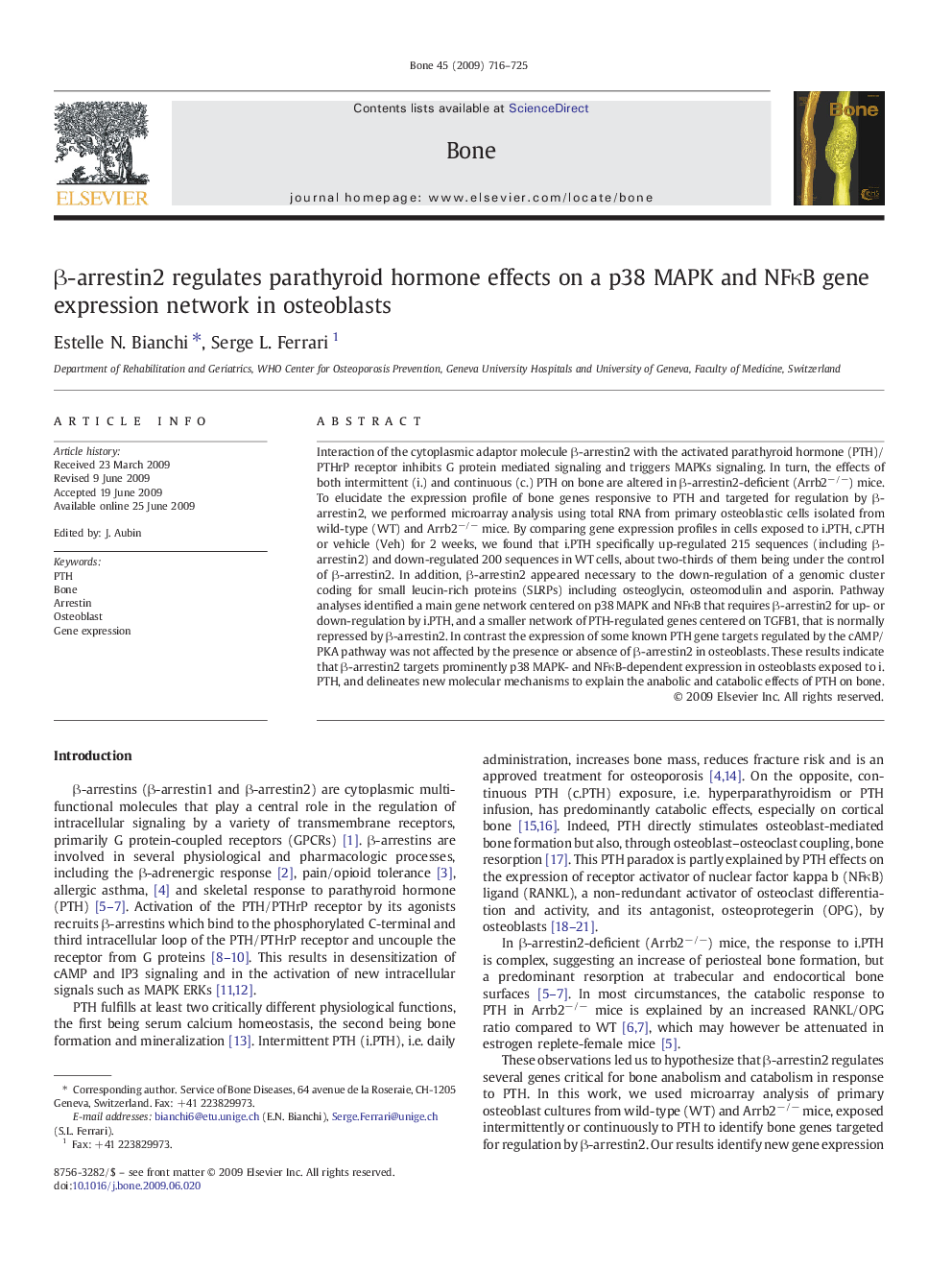| Article ID | Journal | Published Year | Pages | File Type |
|---|---|---|---|---|
| 2780800 | Bone | 2009 | 10 Pages |
Interaction of the cytoplasmic adaptor molecule β-arrestin2 with the activated parathyroid hormone (PTH)/PTHrP receptor inhibits G protein mediated signaling and triggers MAPKs signaling. In turn, the effects of both intermittent (i.) and continuous (c.) PTH on bone are altered in β-arrestin2-deficient (Arrb2−/−) mice. To elucidate the expression profile of bone genes responsive to PTH and targeted for regulation by β-arrestin2, we performed microarray analysis using total RNA from primary osteoblastic cells isolated from wild-type (WT) and Arrb2−/− mice. By comparing gene expression profiles in cells exposed to i.PTH, c.PTH or vehicle (Veh) for 2 weeks, we found that i.PTH specifically up-regulated 215 sequences (including β-arrestin2) and down-regulated 200 sequences in WT cells, about two-thirds of them being under the control of β-arrestin2. In addition, β-arrestin2 appeared necessary to the down-regulation of a genomic cluster coding for small leucin-rich proteins (SLRPs) including osteoglycin, osteomodulin and asporin. Pathway analyses identified a main gene network centered on p38 MAPK and NFκB that requires β-arrestin2 for up- or down-regulation by i.PTH, and a smaller network of PTH-regulated genes centered on TGFB1, that is normally repressed by β-arrestin2. In contrast the expression of some known PTH gene targets regulated by the cAMP/PKA pathway was not affected by the presence or absence of β-arrestin2 in osteoblasts. These results indicate that β-arrestin2 targets prominently p38 MAPK- and NFκB-dependent expression in osteoblasts exposed to i.PTH, and delineates new molecular mechanisms to explain the anabolic and catabolic effects of PTH on bone.
